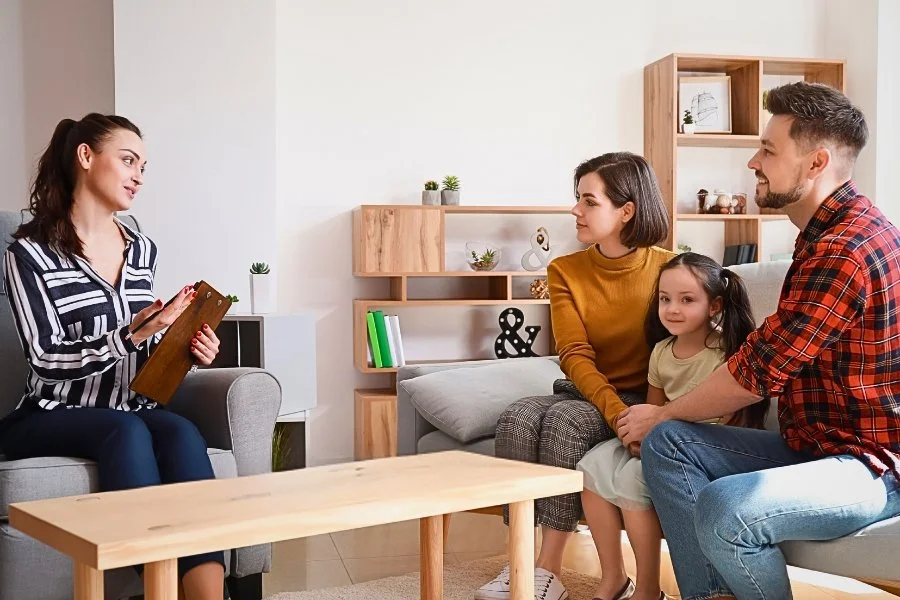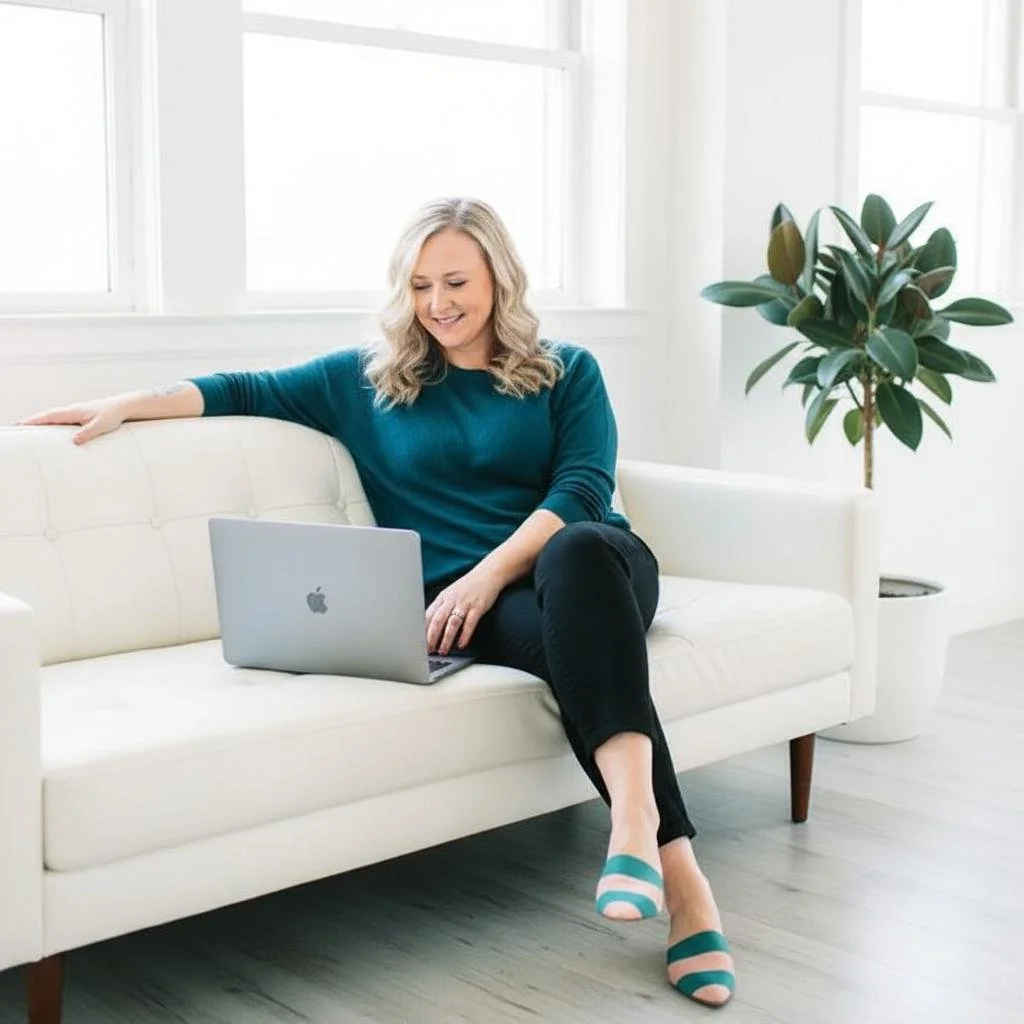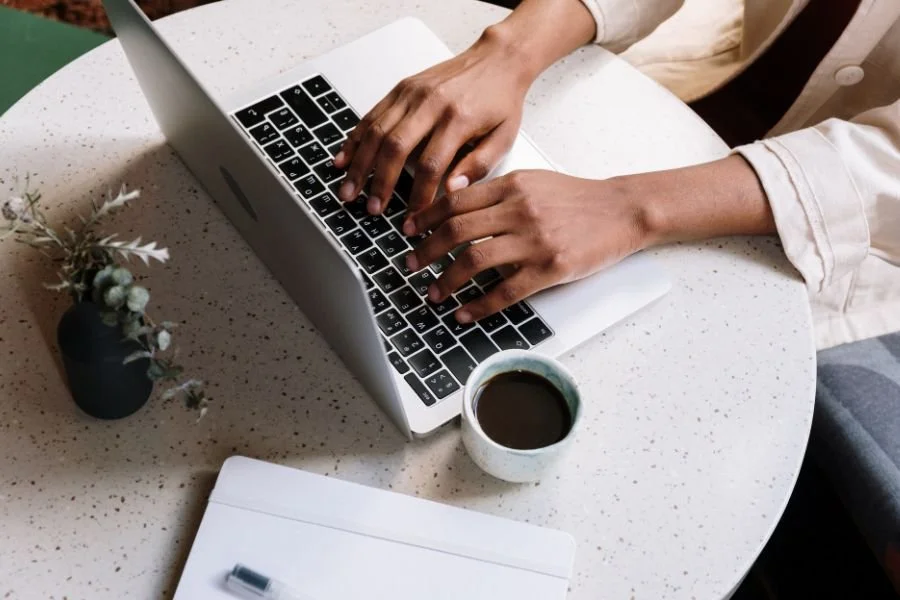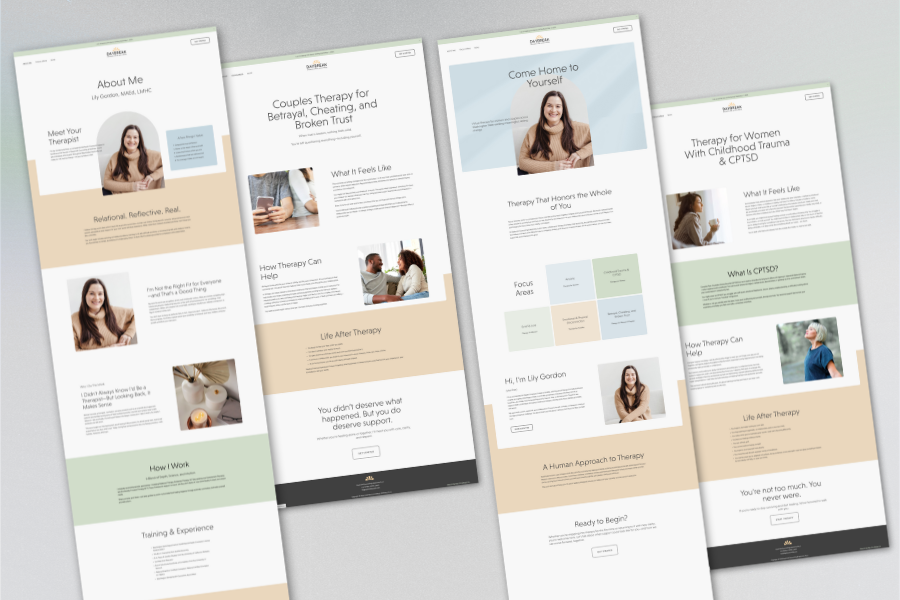Therapist Photoshoot Pose Ideas and a Pre-Shoot Checklist
Therapist Photoshoot Pose Ideas and a Pre-Shoot Checklist
When it comes to designing a therapist website, one of the most overlooked but powerful elements is your photography. Photos do a lot of heavy lifting: they create warmth, show professionalism, and help potential clients get a sense of who you are before they ever reach out.
But here’s the question I hear a lot: do you really need a full lifestyle brand shoot, or will a few simple headshots do the trick?
The truth is, it depends. If you see yourself as the brand and want to attract clients who resonate deeply with you, then yes—having a gallery of polished, lifestyle-forward photos can be a game-changer.
If you’re someone who prefers to keep a lower profile, you may not need dozens of images across your site.
Still, I recommend having at least a half-dozen high-quality photos, because you’ll use them not only on your website but also on directories, social media, or even when you’re asked to submit a bio for speaking events.
Let’s break down the different categories of therapist photos you might consider for your photoshoot, along with examples and the benefits of each.
Just Great Headshots
The first and most essential category is what I call the “just great headshots.” These are the close-up, plain-background photos that focus simply on you. They don’t have to be fancy or overly styled—just you, a warm smile, and a clean backdrop that doesn’t distract from your face. These are by far the most versatile photos you’ll take, because they can be used everywhere: on your homepage, in online directories, on LinkedIn, and in any professional context. The real benefit is that they allow a potential client to connect with you in the most straightforward way possible—by seeing your face, your eyes, and your natural warmth. Nothing else competes for attention.


Doing Therapy
These are photos that capture what it feels like to sit across from you in session. Sometimes you might ask a friend or colleague to pose as a client, keeping their face out of the frame, of course. Or you can recreate the feeling by gesturing or listening intently to someone off-camera. If you’re a telehealth therapist, you might also include shots of you on a video call.
The benefit here is clear: these images help potential clients imagine what it’s like to be in the therapy room with you. They get to see your posture, your attentiveness, maybe the way you hold a notebook or lean in to listen. It’s a way to offer a preview of your therapeutic presence and style, which goes a long way toward building trust before the first session.



Tech and Devices
These are the photos where you’re working on a laptop, tablet, or phone. It might feel odd to think of this as valuable content, but it’s surprisingly useful. These shots communicate professionalism and give a glimpse into what the behind-the-scenes of your practice looks like. They’re especially effective if your work includes telehealth or you run parts of your business virtually. Beyond your website, you’ll also find yourself reaching for these images when you need a filler photo for a blog post, an Instagram caption, or a newsletter graphic. They send a subtle message to clients that you’re organized, modern, and accessible.



Sofas and Chairs
Another great category to include is what I call “sofas and chairs.” Every therapy office has them, and they’re the perfect props because they’re literally what clients see when they walk into your space. These shots can look like you’re perched comfortably on the arm of a sofa, seated casually in an armchair, or even cross-legged on a couch with a notebook in hand. You might lean forward as if you’re listening, or sit back with a mug in a relaxed pose. The benefit of these images is that they instantly feel authentic and grounded in the therapy setting. They also help potential clients imagine the experience of being in your office—seeing you in the same chair they’ll sit across from or noticing the sofa they’ll be on. Beyond creating comfort and familiarity, these shots are versatile: they can look formal or approachable depending on your posture and styling, making them useful across multiple pages of your website.


Office Building and Doorways
Then there are the office building and doorway shots. This is where you stand in the doorway of your office, greeting the camera with a smile, or pose outside the building itself. It’s a small touch that can make a big difference for clients who feel nervous about finding you for the first time. Seeing the exterior of your building or the entrance to your office creates familiarity and lowers that initial anxiety of arriving somewhere new. On top of that, these photos add variety. If every single photo is of you sitting in a chair, the collection can start to feel a little flat. Outdoor or doorway photos break it up while still feeling professional and welcoming.


In the Office
Finally, we have the “in the office” category, which leans more into lifestyle photography. These are the shots of you watering plants, placing flowers in a vase, reading a book, journaling, or gazing out a window. You can also capture close-ups of your hands, your coffee mug, or your décor. These images are less about your face and more about your environment and personality. The benefit here is that they add warmth, personality, and breathing room to your website. They can be used as background visuals, filler images between heavier blocks of text, or even as social media content that reinforces your brand. They’re also an easy way to show your office space without doing a full tour, which can be helpful for clients who want to know what to expect.


Looking for more photo examples? My Pinterest board has many more!
Check it out here↴
So, do you need a full brand shoot?
Again, it depends. If you’re the kind of therapist who wants to connect deeply with potential clients online, and if your marketing depends heavily on your website and social presence, then investing in a full brand shoot is absolutely worth it. A cohesive set of images builds trust, makes your site look polished and professional, and gives you endless content for everything from your homepage to a workshop flyer. If you see yourself as the brand, a brand shoot helps amplify that message and attract the right people to your practice.
The downsides
Let’s be honest—there are some downsides, too. Too many photos of yourself can make your website feel self-focused, especially if the copy is also all about you rather than the client. Photos that don’t quite match your clinical focus can also backfire. For example, shots that feel too casual, trendy, or staged might not align with the serious, grounding work you actually do. Poor-quality or over-stylized photos can distract instead of building trust. The goal is always to capture your authentic presence in a way that reinforces, rather than competes with, the therapeutic relationship you’re offering.
When to get new photos
Another question that often comes up is: how often should you refresh your photos? My rule of thumb is simple: update them when your appearance changes significantly. I don’t mean a trim that makes your hair slightly shorter or longer—that’s fine. But if you’ve had a major style shift, your hair color is totally different, you’ve changed how you dress, or you’ve simply aged enough that your photos no longer look like you, then it’s time. The last thing you want is for a new client to meet you in person or on Zoom and feel surprised that you don’t match your photos. Keeping your images up-to-date maintains consistency and authenticity, which is key in building trust.
The Big Picture
At the end of the day, professional photos are one of the most effective ways to make your website feel credible, inviting, and personal. Whether you invest in a full brand shoot or stick with a handful of high-quality headshots and a few lifestyle shots, your images should reflect who you are and the kind of therapeutic relationship you want to build. In the next section, I’ll share a pre-shoot checklist to make sure you walk into your session prepared and walk away with the best possible set of images.
Pre-Shoot Checklist for Therapists
If you’re ready to schedule your photoshoot, a little preparation will help you walk in confident and walk out with a versatile set of images you can use for years. Here’s a checklist to guide you:
Outfits
Choose at least two outfits: one more professional (blazer, blouse, dress shirt) and one more casual (sweater, flowy top, etc.).
Stick with solid colors or subtle patterns so the focus stays on you.
Avoid busy prints, neon colors, or anything that feels “not you.”
Bring layers (like a cardigan or jacket) to quickly change your look without a full outfit swap.
Props
Laptop, tablet, and phone (fully charged and clean screens).
Notebook and pen.
A favorite coffee mug or tea cup.
A couple of books that represent your work or values.
Fresh flowers or a plant if you want lifestyle shots in your office.
Space Prep
Tidy your office: clear clutter, straighten books, fluff pillows.
Add a few personal touches (a blanket draped neatly, a small plant, artwork in view).
Check lighting—natural light is best, so schedule around the brightest times of day in your space if possible.
Shot List Reminders
Headshots: plain background, close-up.
Sofas & Chairs: sitting, leaning, casual or formal poses.
Doing Therapy: listening, gesturing, video calls, note-taking.
Tech & Devices: working at laptop, scrolling phone, typing at desk.
Office Building/Doorway: welcoming shots outside or at entrance.
In the Office: reading, watering plants, décor close-ups.
Mindset
Think less “posed” and more “natural.” You want to capture the way you actually sit, smile, and engage.
Don’t worry about “feeling photogenic.” A good photographer will help you relax and bring out authentic expressions.
Remember that these photos aren’t about perfection—they’re about helping clients feel more comfortable reaching out to you.
Some of My Favorite Private Practice Tools
Resources and Referral Links
























































